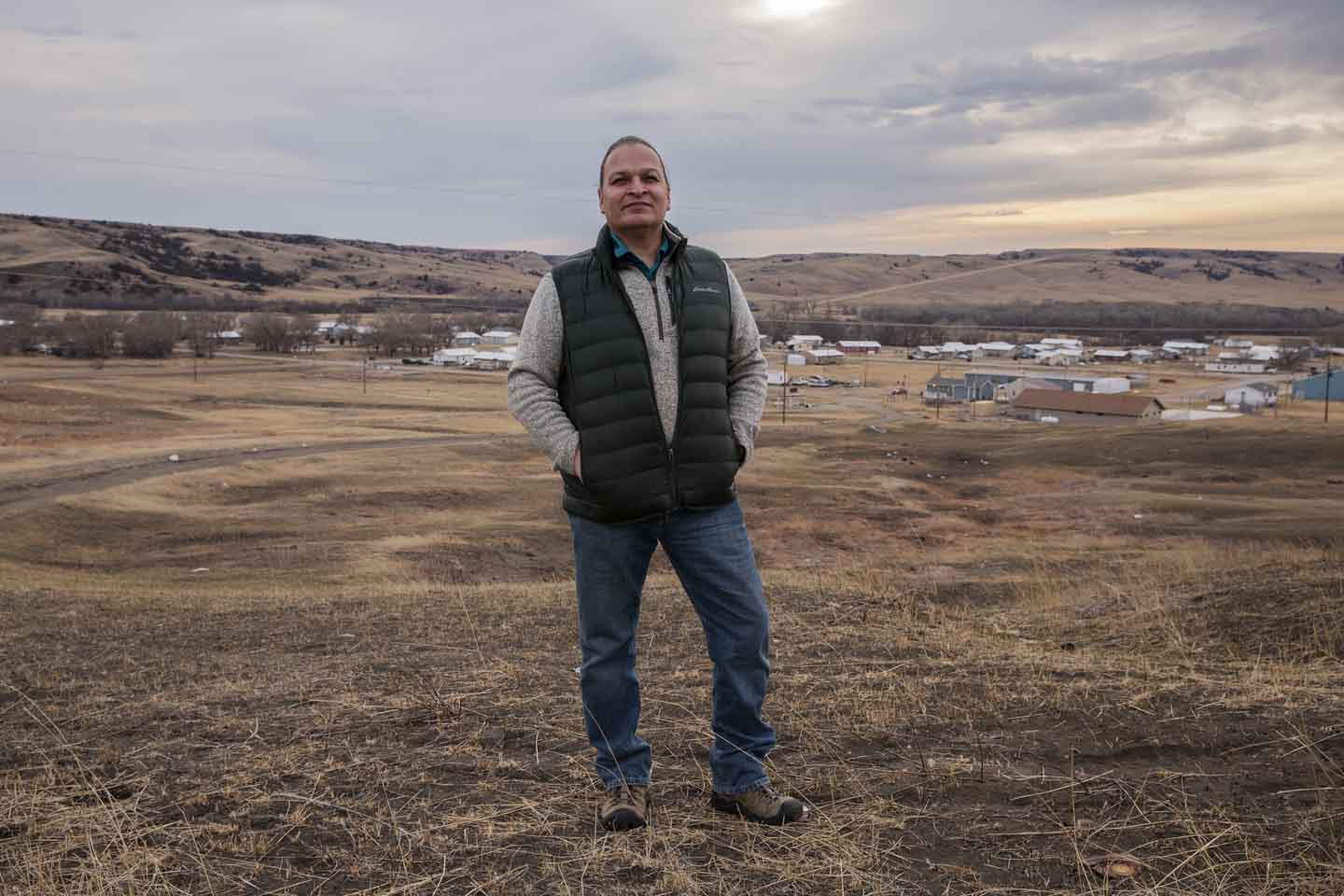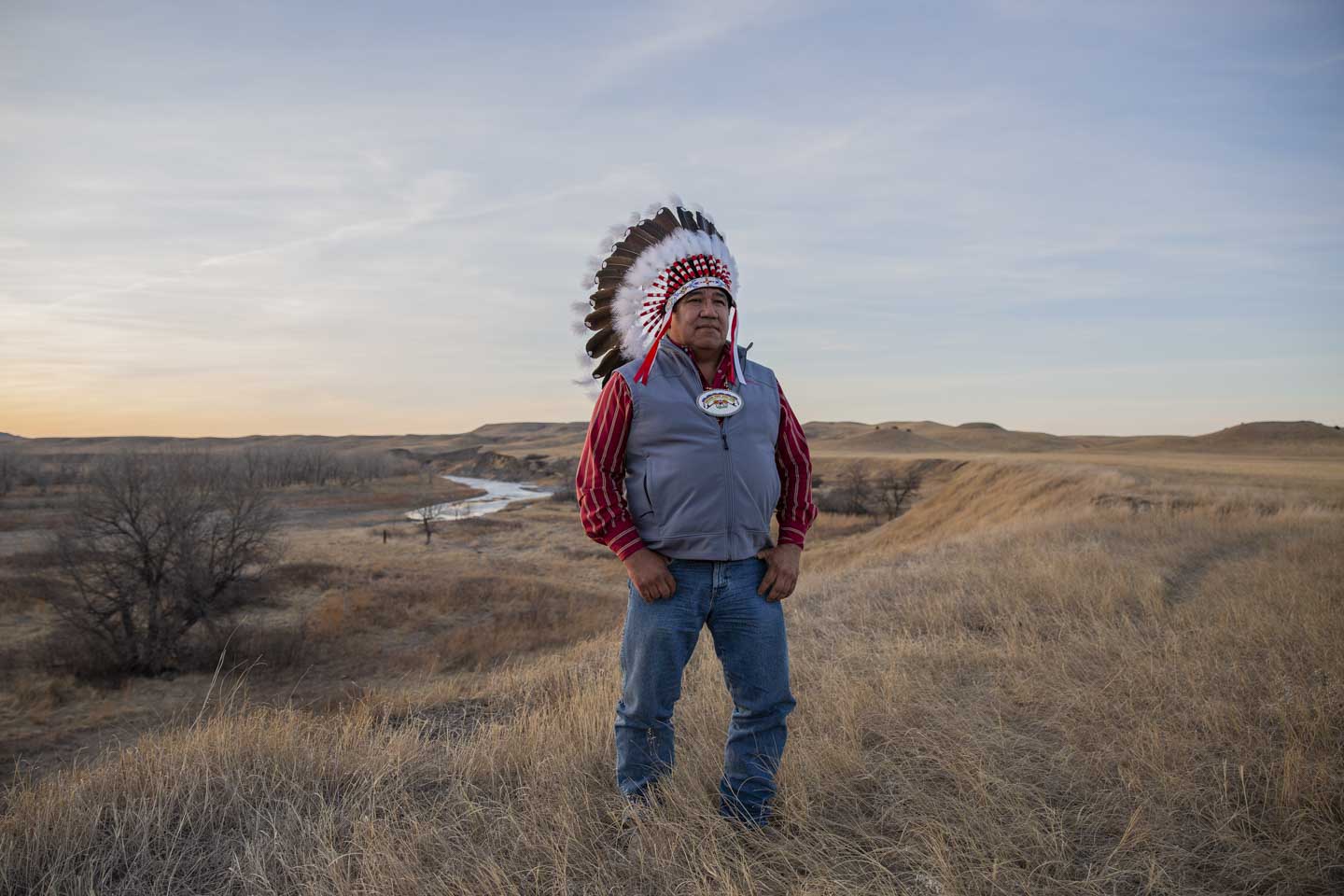“Mass sterilization to most people is just an event,” Remi Bald Eagle told me recently, holding back tears. “But to us, that’s family that never made it here.” The sterilization campaign that the Indian Health Service carried out in the 1960s and ’70s afflicted somewhere between 25 and 40 percent of Native American women of childbearing age nationwide. Sterilizations were performed through coercion and without informed consent, a grievous violation of the physical integrity and personal agency of the women affected. On the Cheyenne River Reservation, the sovereign Lakota nation in South Dakota where Bald Eagle lives, the campaign left deep scars in the community. “There’s always that loss,” said Bald Eagle.
Now, the IHS, the same US government agency that sterilized women, is comanaging the vaccination effort to combat the Covid-19 pandemic along with CRST Tribal Health. Tribal leaders and health care workers are making every effort to overcome resistance to vaccination, but for many Cheyenne River tribal members, this legacy of abuse is making the choice to get vaccinated or not acutely difficult.
Last year, I covered the tribe’s bold battle against Covid-19 for The Nation. When the vaccine arrived and many of the newly inoculated shared their status on social media, I wondered how the people I spent time with at the height of infections on the reservation were feeling about this possibility of relief. Opinions varied, of course, even within the same households, but everyone I interviewed relied on personal reflection and prayer, history, and experiences both lived and passed on, while making a decision about the vaccine.
Like many places, there was an initial surge of vaccinations in Cheyenne River once they became available late last year. After months of separation in a community that deeply values family, people were desperate to see relatives again. Tribal Chairman Harold Frazier said the “hardest thing” about the pandemic for his people “is not being able to see family,” adding, “The basis of our culture is family and it’s really taken a toll on a lot of people.”
Today, the Cheyenne River reservation, like the rest of the country, is experiencing a plateau in vaccination rates. The dynamics for this marked decline in new vaccinations are different from community to community, but on the reservation, people I spoke to said the main reason remains distrust of the US government in general and of IHS medical authorities in particular. This distrust began with the first colonizers in the 15th century and continued through the founding of the US and has thrived to this day.
As of June 30, a total of 6,091 vaccinations had been given on the reservation. Of these, 3,136 were first shots and 2,955 were second shots, in an estimated population of 10,000–12,000. With the more transmissible Delta variant rapidly gaining ground in the United States, that means that well over half the reservation’s population remains at high risk of contracting the virus. Yet every decision the tribe makes is shaped by that history of cruelty and betrayal, and that includes medical care.
“The threat against our people has never changed,” Bald Eagle, intergovernmental affairs coordinator for the tribe, told me. “We survived massacres, wars with the US, and laws the US made against us. We survived prejudice, racism, genocide, sterilization, boarding schools, I don’t even want to get into adoptions, the churches.” The Covid-19 pandemic “is just another thing to survive,” he said. “And we did it through the resilience of the people here, not because of the CDC or the state of South Dakota for sure, they were fighting against us.”
At the pandemic’s onset, the tribe’s response was swift and sweeping. This wasn’t their first rodeo with a deadly virus, after all. They followed recommendations by medical professionals and scientists, and developed their own strict response plan, driven by the entrenched knowledge that the tribe must protect itself at all costs. In early 2020, the tribe set up checkpoints on all roads with access to the reservation in a vigilant effort to protect its people. South Dakota Governor Kristi Noem, who eschewed pandemic precautions, ordered the checkpoints removed, a demand she and then-President Donald Trump, whom Noem turned to for support, did not have the legal right to enforce. After the vaccine arrived and infection rates fell, the tribe made the decision to remove the checkpoints themselves. Thanks to their quick efforts, infection rates remained under control, though 1,815 people have contracted the virus and 37 people have died, a mortality rate slightly higher than the national average.
For tribal members who choose to get vaccinated, access to the vaccine and as much information that’s known about it are not the hurdles. Chances are high in this tight-knit community that the person administering the vaccine was a schoolmate or at a minimum a familiar face. CRST Tribal Health infection control nurse and tribal member Molly Longbrake, who lost her mother to Covid-19, regularly travels 90 minutes or more, round trip, to administer the vaccine to people living in the reservation’s smallest communities. She and her team, which consists of three providers, eight nurses, and 17 support staff, also go door to door and make phone calls to offer information. “Education, education, education,” is how Longbrake said they are addressing those who say no, need more time, or ask for more information. “I’m not ready to let our guard down by any means, especially with the new strains that are popping up,” she told me.
Before the vaccine was available in Cheyenne River, most fears centered around keeping the virus away from tribal members. Now, “the anxiety is the vaccine itself,” said Joseph White Eyes, noting the possibility of physical side-effects as well as the history of broken trust and abuse by the US government. We were “used as test dummies in hospitals and infected with smallpox blankets to wipe us out,” said White Eyes.
A lot of people believe the vaccine was too rushed and the long-term effects could be harmful, said Longbrake—they ask her what it’s going to do to them “a year down the road? Ten years down the road? Will it cause infertility?”
The US government’s brutal crackdown to the protests against the Dakota Access Pipeline on the Standing Rock Reservation, which borders Cheyenne River, reaffirmed in the minds of many young people that the government was not there to protect them. As 44-year-old Tami Hale told me, the US government “put fear in us, just taking lives like it was nothing. And now they’re taking the biggest life of all and that’s Mother Earth. Natural resources. If you drain the blood out of your body, you’ll die. That’s what they’re doing, they’re killing her.”
“Now they want me to take the vaccine. I said no. I don’t trust the government, I don’t trust the shot,” said Hale.
“The vaccine is an event we have to figure out how it’s going to affect our families for generations to come,” said Bald Eagle. “When we make a decision to get the vaccine, we’re not just balancing whether or not that vaccine is good for me, but whether or not there’s other things involved in this vaccine.”
“Every decision we make, whether it’s putting our children in school, getting a vaccine, the food we eat…is overcast by the shadow of tyranny” Bald Eagle told me. “The wheels of Manifest Destiny are still full of blood, and it’s ours.”




